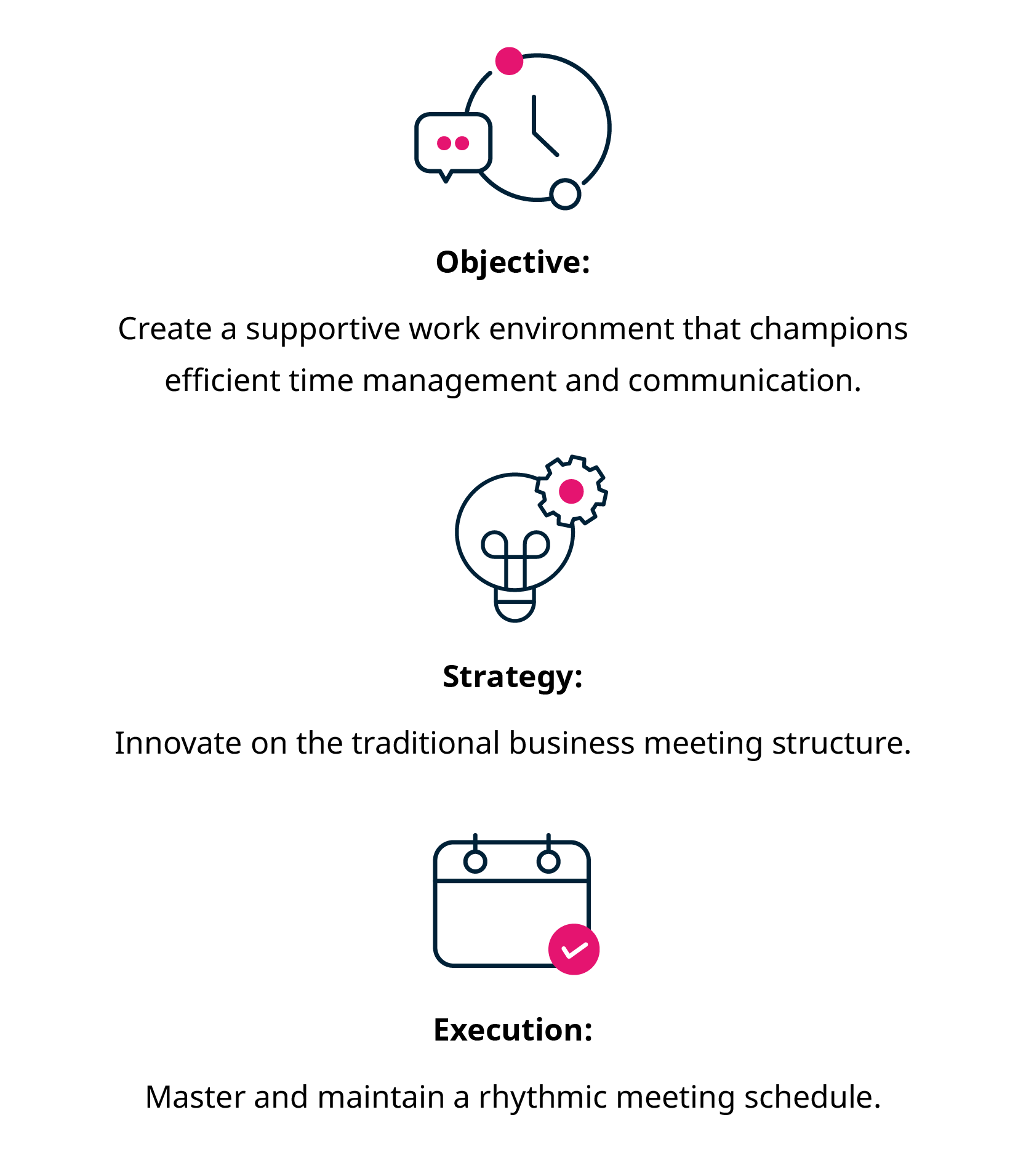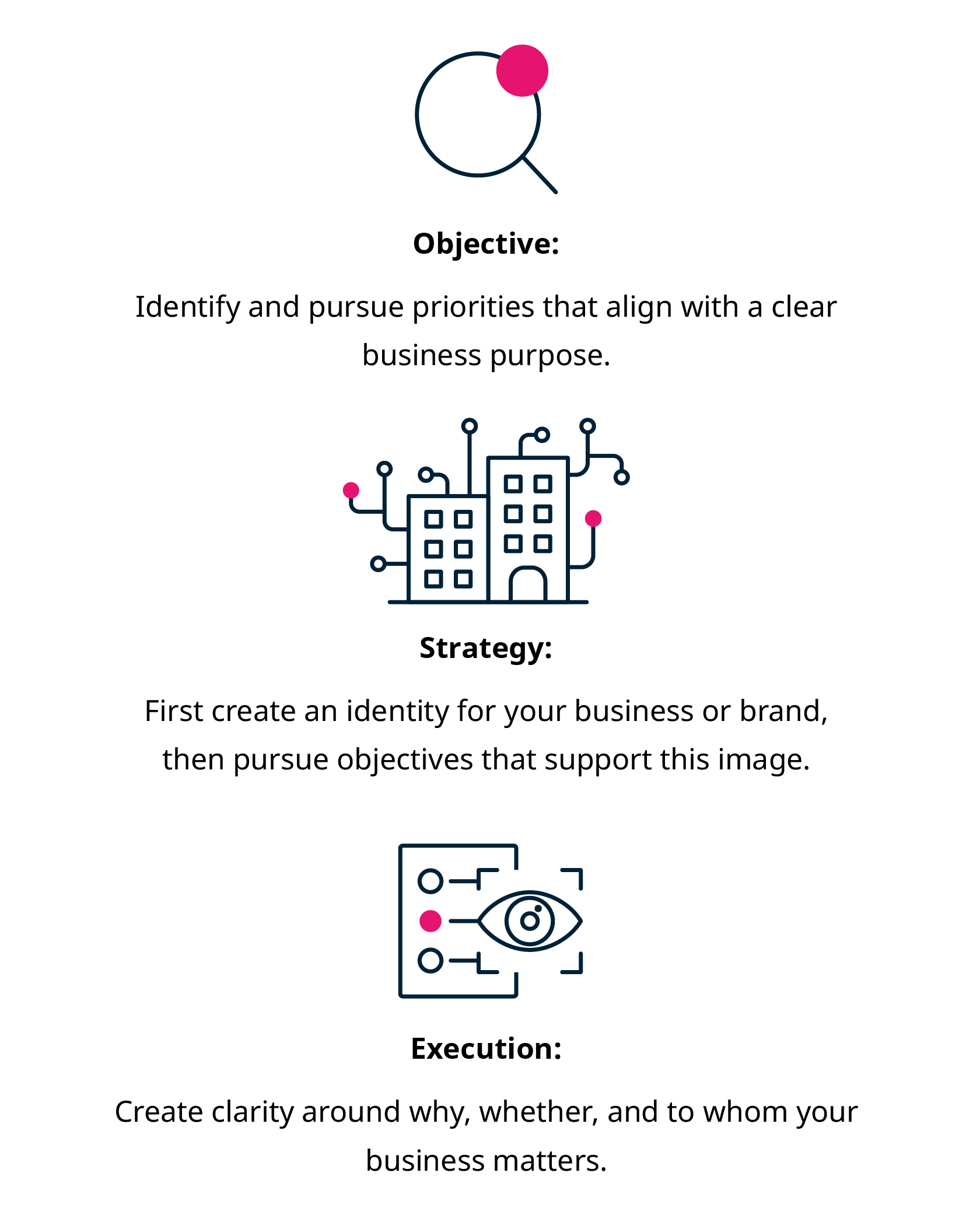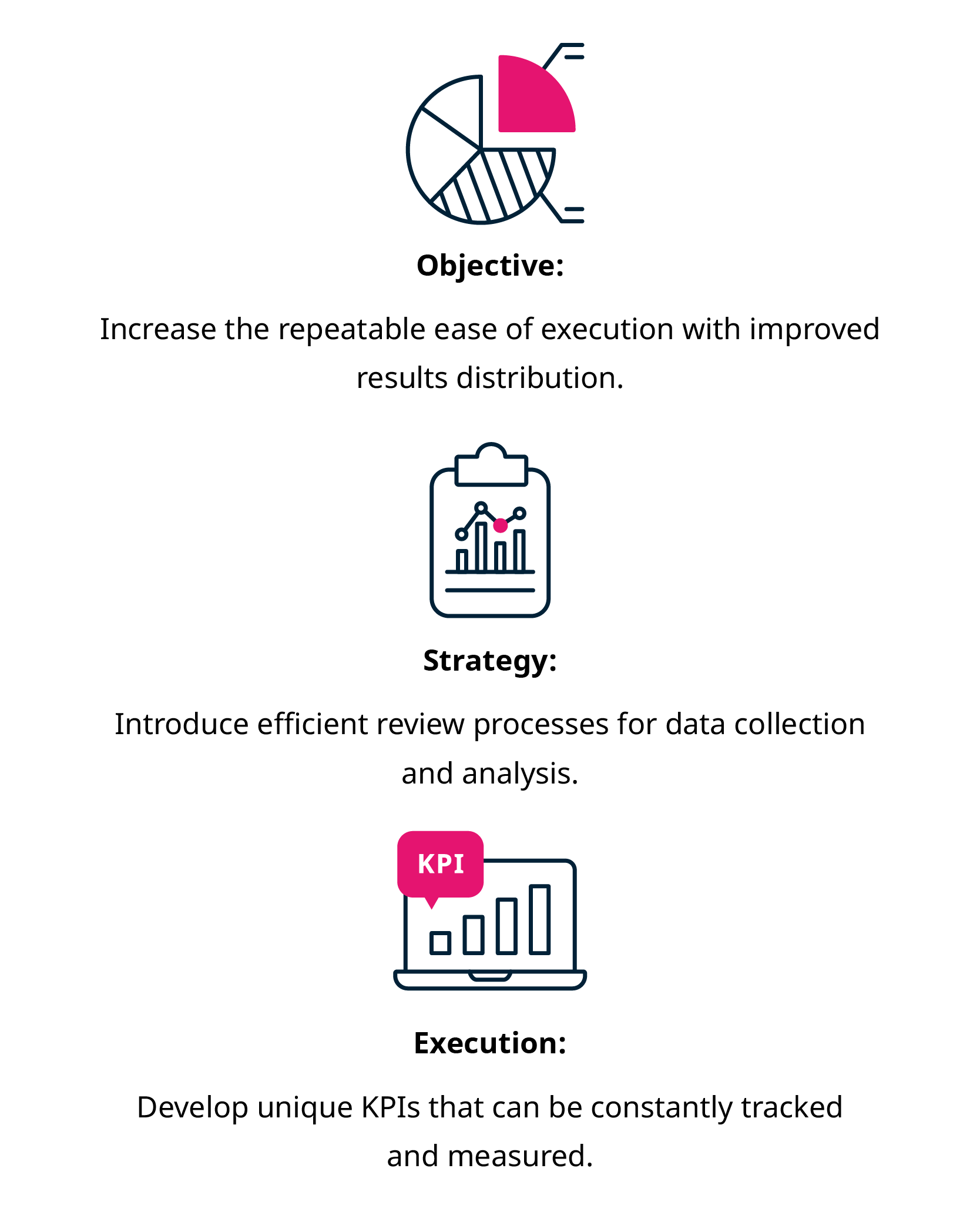How To Bridge the Gap Between Strategy and Execution
Sixty-eight percent of leaders feel their company is good at crafting strategy, but 61 percent say they struggle with closing the gap between strategy formulation and execution.1
The pressure to follow through on implementation throughout a project’s life cycle is a challenge shared by many entrepreneurs, business owners, and freelancers, especially if they find themselves juggling the roles of planner and executor.
Focusing on managing capacity and setting clear process strategies can help to ensure successful execution.
How to be strategic about time management

Maintaining a repeatable rhythm to your schedule will enable you to tailor your week to suit your priorities, energy cycles, and work environment, which is increasingly essential in today’s evolving, complex work environment.
Start by defining the different types of meetings you typically encounter in a week. Next, divide them up into groupings of outcomes or agendas like the following examples:

Admin and daily check-in meeting: A morning rundown of the previous day’s progress followed by a plan for the day ahead, as well as any relevant announcements or updates to your team.
Priority alignment and strategy meeting: Create actionable outcomes based on an original strategy idea. This includes creating or adjusting key performance indicators (KPIs), objectives, and timelines to ensure the business is on track to meet annual and quarterly targets.
Brainstorming and productivity meeting: Here it’s important to address specific business challenges. Discussions around problem-solving solutions should be built into process plans that will require final strategic oversight before implementation.
Project and performance meeting: A periodic meeting to track all current work in relation to overarching strategies. This session should focus on where adjustments can be made to ensure implementation meets the original objectives of the particular project or campaign.
Once you have your meetings listed, take note of where to place them in a typical work week. The table below is an example of how you can prioritize your time to ensure planning and time spent on tasks and processes are weighted in an efficient system.
How to be strategic about priority setting and planning

Cynthia A. Montgomery of Harvard Business School says that being a leading strategist means confronting the following four questions:2
- What does my organization bring to the world?
- Does that difference matter?
- Is something about it scarce and difficult to imitate?
- Are we doing today what we need to do in order to matter tomorrow?
Answering these questions will help you define your quarterly, annual, and five-year priorities. You can then move on to creating a One-Page Strategic Plan (OPSP) where all the essential elements of the business are visible in relation to one another. This OPSP will enable you to identify areas that need further planning and track your priority focus when executing to reach your goals.
How to incorporate strategy into your execution process

All priorities and goals should be measurable before you start on execution so that once a process or project is finished, you can identify where and what you could improve or replicate for future work. KPIs can be based on several different variables, depending on your career or industry, for example:
- Percentage of organic traffic to your website
- Number of units sold per day
- Total PDF downloads
- Percentage of total weekly profit
- Number of video views
Aim to source results from a range of project performance indicators to develop a holistic overview of your process. Once you have collated these results, you’ll know where adjustments can be made to ensure your execution on future projects is effortless and refined.
If you’re interested in strengthening your organizational strategy skills, consider enrolling in the Oxford Executive Strategy Programme. This seven-week programme unpacks how strategy is changing and how breadth within strategic thinking, in addition to thinking long-term, is imperative to leading strategy.
Similarly, the University of Cape Town (UCT) offers the Small Business: Growth and Management online short course, which teaches students about funding and financing, key legal considerations, marketing and sales, human resources and people management, as well as how to develop a future-focused approach to business management.